

TEQUILA & SPIRITS MAGAZINE

WATCH ON-PAGE VIDEOS























VOLUME 7 - ISSUE 5
<--- ON THE COVER SEPTEMBER/OCTOBER 2024












7 - ISSUE 5
Publisher JosePinedo
AssociateEditor SimonPinedo

Contributors
Anna, Brooke, Martin, Isabel, Maria, Mike,Anna, David, Debbie, Simon, Joe, Jackie, Sara,
All inquiriesto:
Tequila & Spirits Magazine
13089 Peyton Dr., Suite #C295 Chino Hills, CA 91709 Tel # 909-773-0404








Subscription of Tequila & Spirits digital magazine is FREE; with your subscribtion you agree to join our email list to receive your digital copy via email. You may also receive emails about contests we are running and special offers from Tequila & Spirits magazine only. You may opt out of our email list at any time. You may cancel your digital magazine subscription at any time. Tequila&Spirits magazine is published bimonthly by Solstar Wireless, Inc. Material in this publication, including text and images, are protected by copyright. It may not be copied, reproduced, republished, posted, brocast, or trasmitted in anyway without written consent of Solstar Wireless. The views and expressed in Tequila & Spirits magazine by the contributors may not represent the views of the publishers. Solstar Wireless accepts no responsibility for any loss that may be suffered by any person who relies totally or partially upon any information, description, or pictures contained herein. Solstar Wireless is not liable for any mistake, misprint, or typographic errors.
“FROM THE PUBLISHER”
Welcome to the vibrant world of Tequila & Spirits Magazine!
We are thrilled to embark on this journey with you, exploring the rich tapestry of tequila and other spirits from around the globe. Our magazine is more than just a publication; it’s a celebration of craftsmanship, culture, and passion.
Within the pages of Tequila & Spirits Magazine, you’ll find a diverse array of articles, features, and reviews crafted by industry experts, enthusiasts, and connoisseurs. From the history and heritage of tequila to the latest trends in mixology, we aim to educate, inspire, and entertain.
Whether you’re a seasoned aficionado or a curious newcomer, there’s something for everyone in our pages. Join us as we delve into the artistry behind each bottle, uncover hidden gems, and share the stories of the people who make it all possible.
We invite you to raise a glass with us as we explore the world of tequila and spirits together. Cheers to discovery, adventure, and the endless possibilities that await within each sip.
Be yourself, be happy, be inspired, and celebrate! Safety first!
Remember to drink responsibly.
Until next time!
Cheers
Sincerely,
JosePinedo

THOUSANDS SIGN UP TO RECEIVE OUR MAGAZINE SIGN UP TO GET EACH ISSUE DELIVERED STRAIGHT TO YOUR INBOX.
ENTER YOUR EMAIL CLICK HERE TO SIGN UP




























C A N T I N A B A R





















A CELEBRATION OF BAVARIAN CULTURE
BY T&S MAG TEAM

Oktoberfest is the world’s largest Volksfest (beer festival and travelling funfair), held annually in Munich, Bavaria, Germany. The event lasts for 16 to 18 days, starting in late September and concluding on the first Sunday in October. It attracts millions of visitors from around the globe, who come to enjoy traditional Bavarian culture, food, music, and of course, beer.
Historical Background
The origins of Oktoberfest date back to October 12, 1810, when Crown Prince Ludwig (later King Ludwig I) married Princess Therese of SaxeHildburghausen. The citizens of Munich were invited to join in the festivities held over five days on the fields in front of the city gates.
The celebrations included horse races, which became an annual event and were the precursor to the modern Oktoberfest.
Over the years, the festival grew and evolved, incorporating agricultural shows, carousels, swings, and eventually, beer tents. The event was moved to September to take advantage of the milder weather, which allows visitors to enjoy the outdoor activities and beer gardens more comfortably.





OktoberfestBeer:TheHeartoftheCelebration
Beer Tents and Gardens: One of the main attractions of Oktoberfest is the vast array of beer tents and gardens. There are over 30 tents, each offering a unique atmosphere and selection of beers from Munich’s six major breweries: Augustiner, Hacker-Pschorr, Hofbräu, Löwenbräu, Paulaner, and Spaten. Each tent can accommodate thousands of guests and features traditional Bavarian music, food, and decorations.
Oktoberfest beer is a special category of beer brewed specifically for the Oktoberfest celebration in Munich. These beers are brewed by Munich’s six major breweries, adhering to traditional brewing methods and following the Reinheitsgebot, the German Beer Purity Law of 1516. Here’s a deeper dive into what makes Oktoberfest beer unique and essential to the festival experience.
Characteristics of Oktoberfest Beer
Style: Oktoberfest beers are typically Märzen lagers. Historically, Märzen beer was brewed in March (hence the name “Märzen”) and stored in cool cellars to be consumed during the fall. These beers are known for their rich malt flavor and moderate alcohol content, making them perfect for festive drinking.
Color and Flavor: Oktoberfest beers usually have a deep amber to golden color. They feature a malty sweetness with notes of toasted bread and caramel, balanced by a clean, crisp finish. The use of noble hops like Hallertau adds a mild bitterness, ensuring the beer is not overly sweet.
Strength: The alcohol by volume (ABV) of Oktoberfest beers typically ranges from 5.8% to 6.3%, providing a satisfying yet not overwhelming strength suitable for extended periods of consumption.




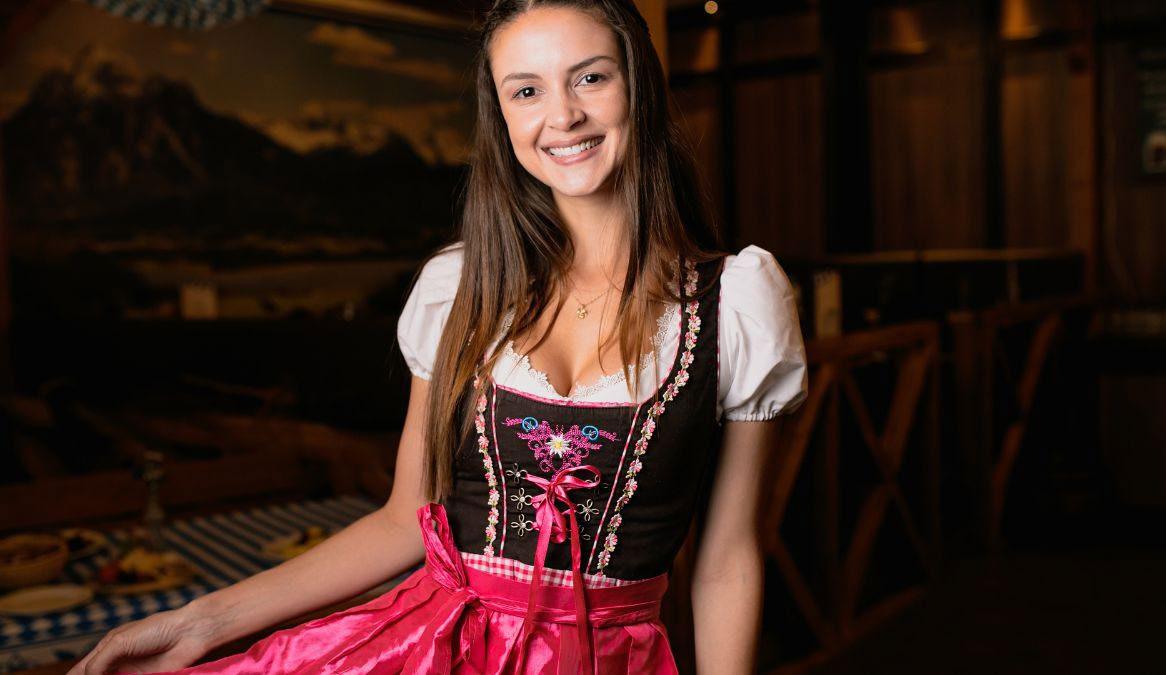

















Beer Tents: Each brewery has its own tent at Oktoberfest, where their beer is served. These tents vary in size and atmosphere, but all offer a lively environment with music, dancing, and traditional Bavarian hospitality.
Steins: Oktoberfest beer is traditionally served in large glass mugs called Maßkrug or simply Maß (one liter). These hefty mugs not only hold a substantial amount of beer but also add to the festive and communal atmosphere of the event.
Temperature: The beer is typically served cool but not ice-cold, allowing the full flavors and aromas to be appreciated.
Traditional Attire: Many visitors and locals alike dress in traditional Bavarian clothing. Men typically wear lederhosen (leather shorts) with suspenders, while women don dirndls (a type of dress that includes a bodice, blouse, full skirt, and apron). Wearing these outfits adds to the festive atmosphere and celebrates Bavarian heritage.
Food: Oktoberfest is a food lover’s paradise, offering a variety of traditional Bavarian dishes. Some popular options include pretzels, sausages (such as Weisswurst and Bratwurst), roast chicken, pork knuckles, potato pancakes, and various types of cheese. Sweet treats like apple strudel and gingerbread hearts are also widely enjoyed.
Rides and Entertainment: In addition to the beer and food, Oktoberfest features numerous rides and attractions, ranging from classic fairground rides like Ferris wheels and carousels to more modern roller coasters and thrill rides. There are also parades, musical performances, and other forms of entertainment to keep visitors engaged.


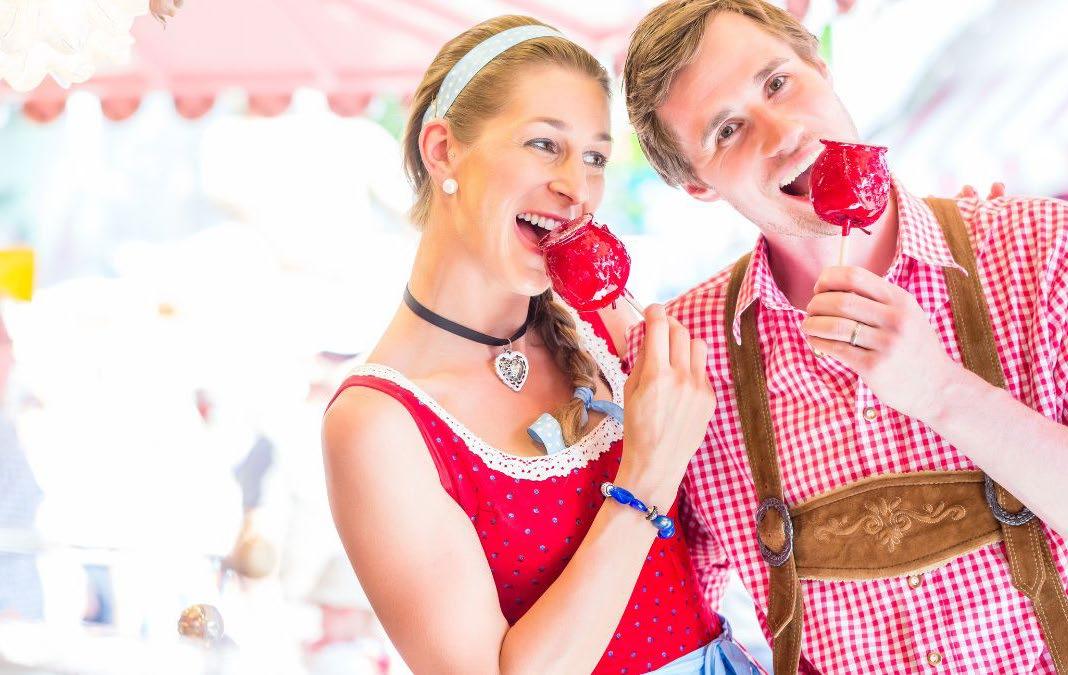



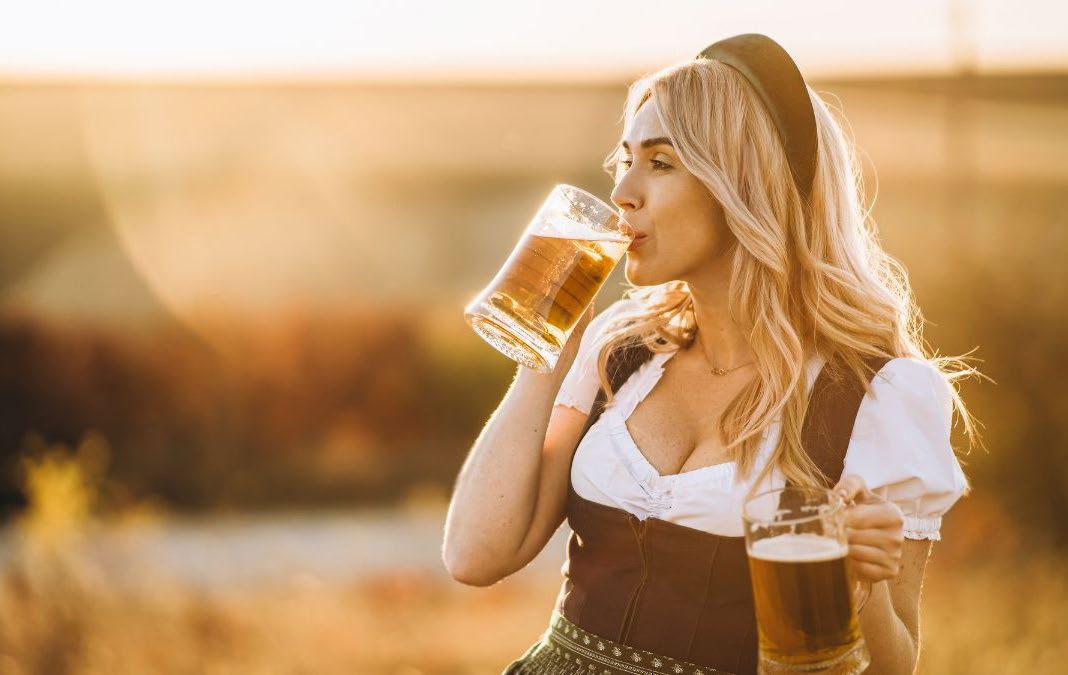



Cultural Impact
Oktoberfest has had a significant impact on global beer culture and has inspired numerous similar festivals worldwide. Many cities across Europe, the Americas, and Asia host their own versions of Oktoberfest, celebrating with Bavarian beer, food, and music.
In Munich, the festival is a major economic event, generating substantial revenue for the city and providing thousands of jobs. It also serves as a key aspect of Bavarian cultural identity, promoting the region’s traditions and hospitality to an international audience.
Tips for Visitors
• Plan Ahead: Accommodation in Munich during Oktoberfest can be scarce and expensive. Book your stay well in advance to secure a good location.
• Visit During the Week: Weekends can be incredibly crowded. Visiting during the week offers a more relaxed experience with shorter lines and more available seating in the beer tents.
• Stay Hydrated: While beer is the main attraction, it’s essential to drink water regularly to stay hydrated, especially if you plan on spending the entire day at the festival.
• Use Public Transport: Munich’s public transportation system is efficient and convenient. Using it can help you avoid the hassle of finding parking and navigating the busy streets.
• Respect the Culture: Embrace the traditions, wear the traditional attire if possible, and be respectful of the local customs and other visitors.
Oktoberfest is a unique celebration that offers a wonderful opportunity to experience Bavarian culture in all its glory. Whether you’re a beer enthusiast, a food lover, or someone who enjoys vibrant festivals, Oktoberfest promises an unforgettable experience.

OBSTBRAND GERMAN SPIRIT
BY SIMON PINEDO


Obstbrand is a type of German fruit brandy made from a variety of fruits, such as apples, pears, plums, and cherries. It’s known for its rich and intense fruit flavors. The production process involves fermenting the fruit and then distilling it, resulting in a clear, highproof spirit. It’s often enjoyed as a digestif or used in cocktails.
History of german Obstbrand spirit
The history of German Obstbrand, or fruit brandy, is deeply rooted in the country’s tradition of distillation, which dates back to the Middle Ages. Distillation techniques were introduced to Germany from the Arab world in the 12th and 13th centuries, and by the 15th century, fruit brandies were being produced.
In rural Germany, farmers began distilling their excess fruit to create Obstbrand, which became a way to preserve and make use of seasonal harvests. The spirit was not only a practical solution for using surplus fruit but also a valued commodity in local markets and among families.
Throughout the centuries, the production of Obstbrand became increasingly refined, with a focus on enhancing the flavor and quality of the spirit. Today, Obstbrand is crafted with meticulous care, often using traditional methods to maintain its distinctive fruity characteristics. The spirit remains a popular part of German culture, enjoyed both domestically and internationally.










SUBSCRIBE FOR FREE


Traditions of obstbrand spirit
Obstbrand is deeply embedded in German traditions and customs:
Harvest Festivals: In rural areas, Obstbrand is often associated with harvest festivals. It’s common for families and communities to gather to celebrate the fruit harvest, and Obstbrand plays a central role in these festivities.
Family Recipes: Many families have their own secret recipes for Obstbrand, passed down through generations. These recipes can vary based on the type of fruit used and the distillation methods.
Digestif: Obstbrand is traditionally served as a digestif, especially after hearty meals. It is believed to aid digestion and is enjoyed for its rich, fruity flavor.
Special Occasions: It is often consumed during special occasions, such as weddings, birthdays, and other celebrations. In some regions, it is even offered as a welcome drink to guests.
Local Distilleries: Many small, family-owned distilleries in Germany produce Obstbrand, maintaining traditional methods and contributing to the local economy. These distilleries often open their doors for tours and tastings, allowing visitors to experience the craft firsthand.
Gifts: A bottle of high-quality Obstbrand can be a cherished gift, symbolizing hospitality and appreciation.
These traditions highlight the cultural significance of Obstbrand in German life and its role in celebrating both everyday moments and special occasions.


How obstbrand is made?
The production of Obstbrand involves several steps, each crucial for developing its distinctive flavor:
Fruit Selection and Preparation: High-quality, ripe fruit is selected. Common fruits used include apples, pears, plums, and cherries. The fruit is then washed, pitted (if necessary), and cut into smaller pieces.
Fermentation: The prepared fruit is placed in fermentation tanks, where natural or added yeast converts the sugars in the fruit into alcohol. This process typically lasts from several days to a few weeks, depending on the fruit and desired characteristics.
Distillation: The fermented fruit mash is then distilled. In traditional methods, this is done using a pot still, which heats the mash to separate alcohol from the water and other components. The alcohol vapors are collected and condensed back into liquid form. Modern distilleries may use column stills for more precise control.
Aging (Optional): Some Obstbrands are aged in wooden barrels to develop additional complexity and smoothness. However, many are bottled immediately after distillation to preserve the fresh, fruity character.
Filtering and Bottling: The distilled spirit is filtered to remove any impurities and then bottled. The final product is usually clear and high-proof, with a concentrated fruit flavor.
Quality Control: Throughout the process, the quality of the Obstbrand is carefully monitored to ensure that it meets the desired taste and quality standards.
Each step in the process is essential to producing a high-quality Obstbrand, and variations in techniques can lead to different flavor profiles.

COMING S O O N MOVIES



BEETLEJUICE
Beetlejuice is back! After an unexpected family tragedy, three generations of the Deetz family return home to Winter River. Still haunted by Beetlejuice, Lydia’s life is turned upside down when her rebellious teenage daughter, Astrid, discovers the mysterious model of the town in the attic and the portal to the Afterlife is accidentally opened.
Release date: September 6, 2024



THE KILLER’S GAME
The Killer’s Game follows veteran assassin Joe Flood (Bautista), who is diagnosed with a life-threatening illness and authorizes a kill on himself to avoid the pain that is destined to follow. After ordering the kill, he finds out that he was misdiagnosed and must then fend off the army of former colleagues trying to kill him.
Release date: September 13, 2024


WOLFS
Global superstars George Clooney and Brad Pitt team up for the action comedy Wolfs. Clooney plays a professional fixer hired to cover up a high profile crime. But when a second fixer (Pitt) shows up and the two “lone wolves” are forced to work together,
they find their night spiraling out of control in ways that neither one of them expected. Watch official trailer now!
Release date: September 20, 2024



Venom The Last Dance
Eddie and Venom are on the run. Hunted by both of their worlds and with the net closing in, the duo are forced into a devastating decision that will bring the curtains down on Venom and Eddie’s last dance.
Release date: October 25, 2024



JOCKER 2
FOLIE À DEUX MOVIE
“Joker: Folie À Deux” finds Arthur Fleck institutionalized at Arkham awaiting trial for his crimes as Joker. While struggling with his dual identity, Arthur not only stumbles upon true love, but also finds the music that’s always been inside him.
Release date: October 4, 2024



FLIGHT RISK
In this high-stakes suspense thriller, Academy Award nominee Mark Wahlberg (Best Supporting Actor, The Departed, 2006) plays a pilot transporting an Air Marshal (Michelle Dockery) accompanying a fugitive (Topher Grace) to trial. As they cross the Alaskan wilderness, tensions soar and trust is tested, as not everyone on board is who they seem.
Release date: October 18, 2024


SMILE 2
About to embark on a new world tour, global pop sensation Skye Riley (Naomi Scott) begins experiencing increasingly terrifying and inexplicable events. Overwhelmed by the escalating horrors and the pressures of fame, Skye is forced to face her dark past to regain control of her life before it spirals out of control.
Release date: October 18, 2024



HOUSE OF THE DRAGON
The reign of House Targaryen begins with this prequel to popular HBO series “Game of Thrones;” based on George R.R. Martin’s “Fire & Blood,”
“House of the Dragon” is set nearly 200 years before the events of “Game of Thrones,” telling the story of the Targaryen civil war with King Viserys I Targaryen’s children battling for control of the Iron Throne.



THE BOYS
Superheroes are often as popular as celebrities, as influential as politicians, and sometimes even as revered as gods. But that’s when they’re using their powers for good. What happens when the heroes go rogue and start abusing their powers?


YOUR HONOR
A respected judge’s son is involved in a hitand-run that leads to a high-stakes game of lies, deceit and impossible choices.



THE ARK
“The Ark” takes place 100 years in the future when planetary colonization missions begin as a necessity to help secure the survival of the human race; after the brave crew of Ark One reaches their destination and finds it uninhabitable, they must survive long enough to locate a new home for themselves and all the ships that follow; the spacecraft’s crew must become the best versions of themselves to stay on course after experiencing a catastrophic event that caused massive destruction and loss of life.

Y LA MARIACHI CHARRERIA
BY SIMON PINEDO
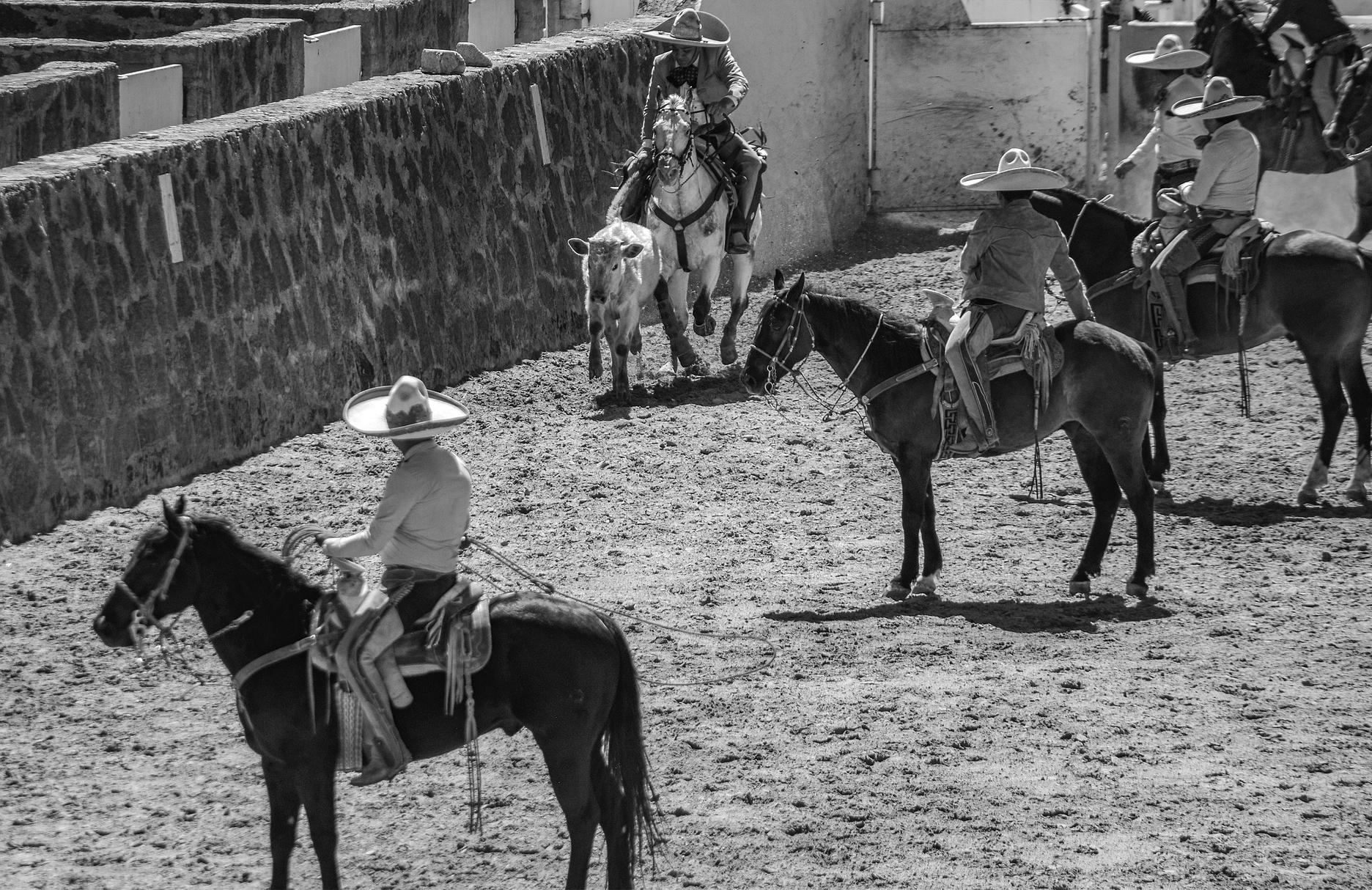

Mariachi
Mariachi is a genre of regional Mexican music that dates back to at least the 18th century. It is characterized by a specific ensemble of instruments and a distinctive style. Traditional mariachi groups typically consist of violins, trumpets, a guitar, a vihuela (a high-pitched, five-string guitar), and a guitarrón (a large, acoustic bass guitar). The music often includes vocals, either solo or in harmony.
Mariachi music originated in the western region of Mexico, particularly in the state of Jalisco, during the 18th century. The roots of mariachi can be traced to rural folk music traditions that combined Spanish musical elements with indigenous and African influences. The genre evolved over time, incorporating a variety of regional styles and instruments.
Cocula, a town in Jalisco, is often referred to as the birthplace of mariachi. The traditional music initially featured string instruments such as the violin and different types of guitars. Over the years, trumpets were added to the ensemble, and the style became more formalized.
By the early 20th century, mariachi music had spread beyond Jalisco, gaining popularity throughout Mexico and becoming a symbol of national identity. Mariachi bands began performing at urban festivals, celebrations, and events, solidifying their role in Mexican cultural life.



Charrería
Charrería is a traditional equestrian sport in Mexico, similar to rodeo in the United States. It originated from the working practices of herding cattle on haciendas and evolved into a competitive sport. Charrería involves various events, known as “suertes” or “charreadas,” which demonstrate horsemanship, roping skills, and cattle handling.
Charrería originated in Mexico, specifically on the vast haciendas (ranches) during the Spanish colonial period. It began as a way for ranch workers, known as vaqueros, to demonstrate their skills in cattle handling and horsemanship. The practices and competitions that eventually formed charrería were influenced by Spanish equestrian traditions brought to Mexico by the conquistadors and settlers.
Over time, these skills and practices evolved into a formalized sport with specific rules and events. The state of Jalisco, in particular, is often considered the heartland of charrería, although it is practiced and celebrated throughout Mexico. Charrería has grown from its practical ranching roots into a symbol of Mexican cultural identity and heritage.
There are festivals dedicated to both mariachi and charrería, often celebrating Mexican culture and traditions.















One of the most prominent mariachi festivals is the International Mariachi and Charrería Festival held annually in Guadalajara, Jalisco. This festival usually takes place in late August and early September.
Charrería events are commonly featured in local fairs and festivals throughout Mexico. However, some festivals specifically focus on charrería, such as:
National Charro Championship: This prestigious event brings together the best charros (cowboys) from across Mexico to compete in various charro skills.
National Charro Day (Día Nacional del Charro): Celebrated on September 14th, this day features charro parades and exhibitions throughout the country, particularly in cities with a strong charro tradition.
Both mariachi and charrería festivals provide an opportunity to experience and celebrate the rich cultural heritage of Mexico.




The International Mariachi and Charrería Festival in Guadalajara, Mexico, offers a wide range of activities and events that celebrate Mexican culture. Here’s what you can do at the festival:
Concerts: Attend live mariachi concerts featuring some of the best mariachi groups from around the world.
Parades: Watch vibrant parades with mariachi bands, dancers, and floats showc[pasing traditional Mexican attire and music.
Public Performances: Enjoy free public performances at various locations throughout the city, including plazas and parks.
Charrería Events
Charro Competitions: Witness exciting charrería competitions, where skilled charros showcase their talents in events like horse reining, bull riding, and steer roping.
Escaramuza Performances: Watch female equestrian teams perform synchronized riding routines in traditional dresses, demonstrating grace and precision.
Participate in Workshops and Conferences
Music Workshops: Join workshops and masterclasses on mariachi music, where you can learn about the instruments, techniques, and history from experts.
Cultural Conferences: Attend conferences and talks on the cultural significance of mariachi and charrería, featuring scholars, musicians, and historians.
Explore Local Culture
Food and Crafts: Sample traditional Mexican cuisine from food stalls and restaurants, and browse local crafts and souvenirs at market stalls.
Cultural Exhibitions: Visit exhibitions showcasing Mexican art, history, and culture, often held in museums and cultural centers during the festival.
Social and Community Events

Gala Events: Attend gala dinners and events where you can mingle with musicians, charros, and other festival attendees.
Family Activities: Enjoy family-friendly activities and events, including children’s workshops and performances.
Tours and Sightseeing
City Tours: Take guided tours of Guadalajara to explore its historic sites, beautiful architecture, and vibrant neighborhoods.
Visit Tequila: Consider a side trip to the nearby town of Tequila to learn about the production of Mexico’s famous spirit and visit the agave fields.
Attending the International Mariachi and Charrería Festival in Guadalajara is a fantastic way to immerse yourself in Mexican culture, enjoy world-class performances, and experience the traditions of mariachi music and charrería up close.


EXTRA AÑEJO
TEQUILA
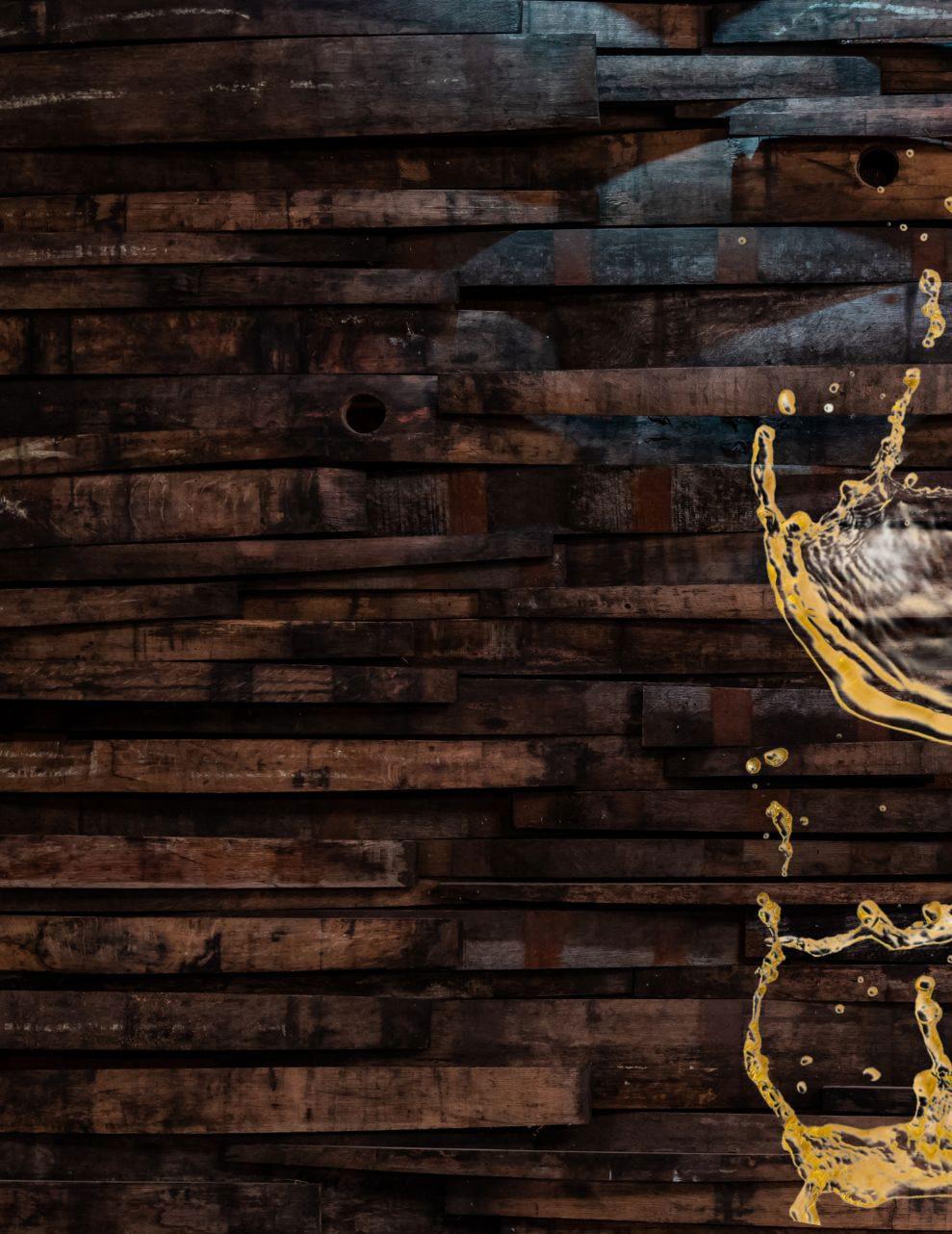
BY T&S MAG TEAM

The Ultimate Guide to Extra Añejo Tequila
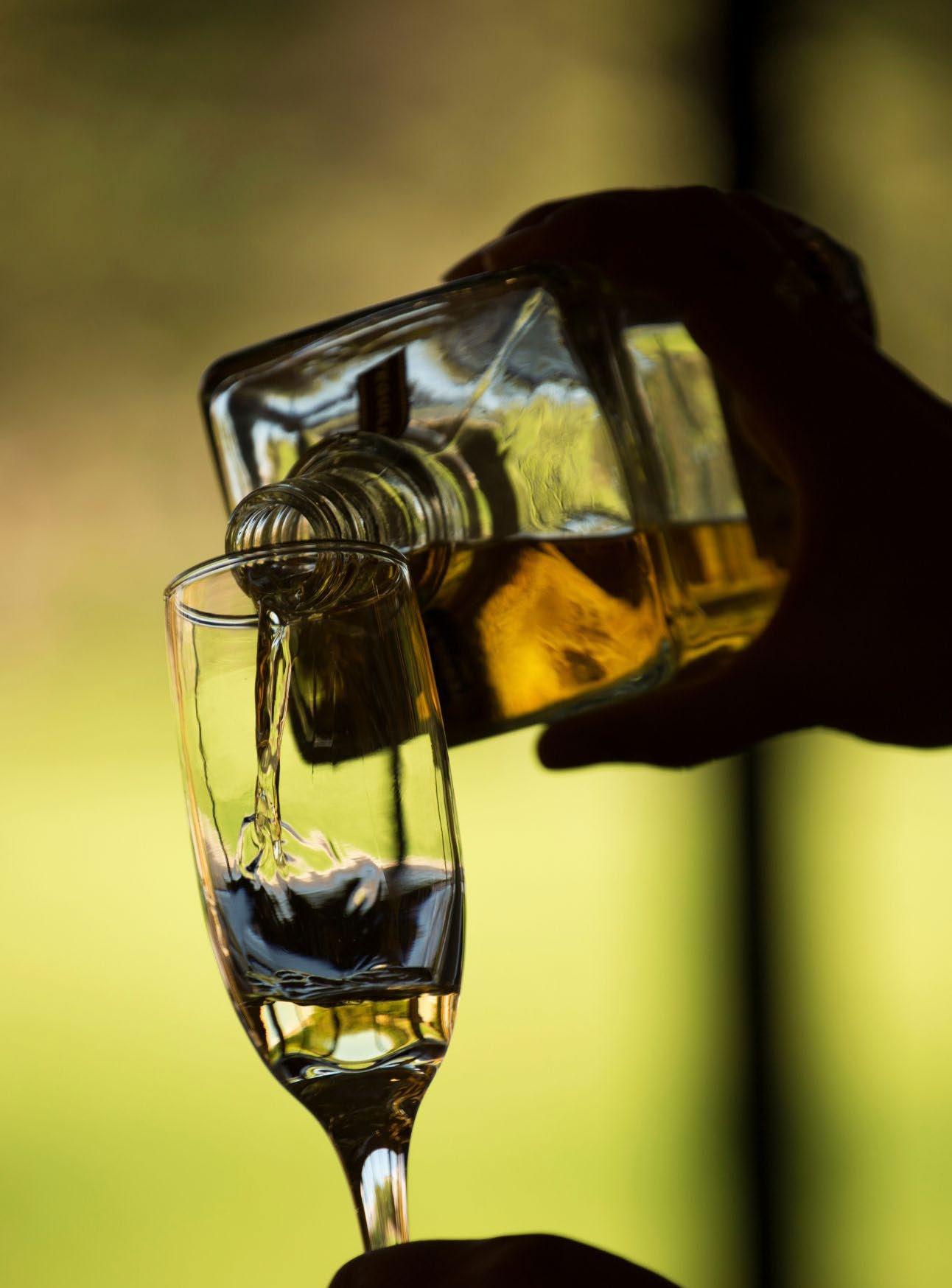
Tequila, a spirit with a rich cultural heritage, has long been associated with celebrations, traditions, and the vibrant spirit of Mexico. Among its many varieties, Tequila Extra Añejo stands out as the pinnacle of craftsmanship and aging, offering a depth of flavor and complexity unmatched by other types. This article explores the essence of Extra Añejo Tequila, from its creation to the best ways to enjoy it.
What is Tequila Extra Añejo?
Tequila Extra Añejo, meaning “extra aged,” is a relatively recent classification in the tequila world, officially recognized by Mexico’s Tequila Regulatory Council (CRT) in 2006. To earn the Extra Añejo designation, tequila must be aged for a minimum of three years in oak barrels, compared to the one-year minimum required for Añejo tequila. This extended aging process imparts a rich, deep flavor profile that often rivals the complexity of fine cognacs or aged whiskies.
The Production Process
1. Harvesting the Agave: The journey of Extra Añejo begins with the harvesting of blue agave plants, the only type of agave allowed for tequila production. These plants take about 7 to 10 years to mature before they are ready for harvesting.
2. Cooking the Piñas: Once harvested, the agave hearts, known as piñas, are cooked in traditional brick ovens or autoclaves to convert the starches into fermentable sugars.
3. Fermentation: The cooked agave is then crushed to extract the sweet juice, known as aguamiel, which is fermented in large vats. This process can take several days and is crucial for developing the tequila’s base flavors.
4. Distillation: The fermented juice is distilled twice to create a clear spirit, which is then aged in oak barrels.
5. Aging: For Extra Añejo, the spirit is aged for a minimum of three years, often in barrels that previously held bourbon, cognac, or wine. This aging process allows the tequila to develop complex flavors, with notes of vanilla, caramel, chocolate, dried fruits, and spices.
Flavor Profile
Tequila Extra Añejo is characterized by its deep amber color, a result of prolonged interaction with the oak barrels. The nose typically offers an array of aromas, from dried fruits like fig and raisin to warm spices such as cinnamon and clove. On the palate, expect a smooth, velvety texture with flavors that may include:
• Vanilla and Caramel: Derived from the oak aging, these are often the most prominent flavors.
• Chocolate and Coffee: Some Extra Añejos develop rich, dark flavors reminiscent of fine desserts.
• Dried Fruit: Notes of fig, raisin, and apricot are common, adding a touch of sweetness.
• Spices: Cinnamon, nutmeg, and cloves can often be detected, especially in tequilas aged in spiced oak barrels.
• Woody and Earthy Notes: The extended aging process often imparts a woody character, with subtle hints of earthiness.
How to Enjoy Tequila Extra Añejo
Tequila Extra Añejo is best enjoyed neat or with a small amount of water to fully appreciate its complexity. It is typically served in a snifter or a Glencairn glass, similar to how you would serve a fine cognac or whiskey. This allows the aromas to concentrate, enhancing the tasting experience.
Some enthusiasts also enjoy Extra Añejo with a cigar, as the rich flavors of the tequila can complement the smokiness of a fine cigar.








Pairing with Food
Extra Añejo pairs exceptionally well with rich, flavorful foods. Consider these pairings to elevate your tasting experience:
• Dark Chocolate:
The bitterness and sweetness of dark chocolate can enhance the caramel and vanilla notes in the tequila.
• Cheese:
Aged cheeses, particularly those with a nutty or creamy character, pair well with Extra Añejo’s complexity.
• Red Meat:
Grilled or smoked meats, especially beef, can stand up to the bold flavors of the tequila.
• Desserts:
Desserts featuring caramel, vanilla, or coffee flavors complement the tequila’s inherent sweetness.
Tequila Extra Añejo represents the height of tequila craftsmanship, offering a rich, complex drinking experience that appeals to connoisseurs and casual drinkers alike. Whether you enjoy it neat, with a cigar, or paired with fine food, Extra Añejo is a testament to the artistry and tradition behind one of Mexico’s most beloved spirits.
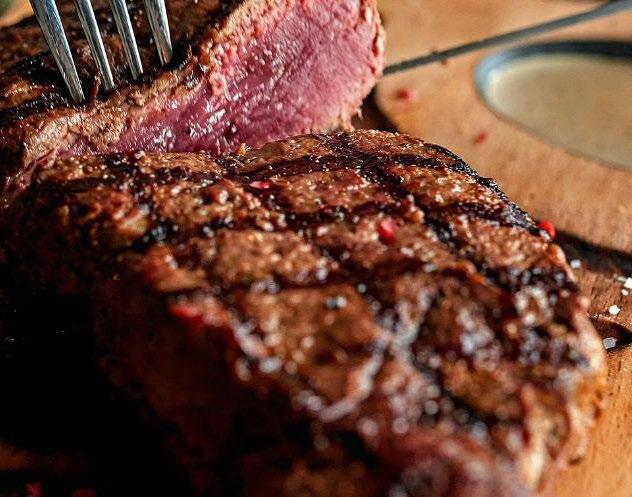


Several tequila producers have mastered the art of crafting Extra Añejo, offering bottles that are both highly regarded and often considered luxury items.
Some notable brands include:

HERRADURA SELECCION SUPREMA EXTRA AÑEJO TEQUILA
Aroma of dark vanilla, rose petals, cinnamon and intense citrus. Complex notes of baked apples, pineapples, citrus, vanilla pods and caramel are exposed on the palate. Creamy finish that has touches of lingering spices.
Named after the Spanish word for “stone,” this Gran Patron Añejo Piedra is aged for four years in a combination of French Limousin and new American oak barrels.

DAME MAS EXTRA AÑEJO TEQUILA
Tequila Dame Mas is Made in Tequila Jalisco, we made it in a traditional process, using mamposteria oven to cook our Agaves, open air fermentation, twice distilled & twice filtered, Dame Mas is 100% from blue agave. Extra Añejo, our special reserve is rested 5 years in French Oak Cognac Barrels, in the aroma you’ll find deep Oak, fruity, nuts and sweet notes, the taste is delicious Oak, light smoke, hazelnut and vanilla notes with a great aftertaste that will make you say Dame Mas.

GRAN CENTENARIO LEYENDA EXTRA AÑEJO TEQUILA
A special Extra Añejo expression, based on an over 150-year-old recipe. Aged for 4 years in American oak, this is a complex, yet subtle Extra Añejo tequila from the Highlands of Jalisco, Mexico.

GRAN PATRON PIEDRA EXTRA AÑEJO TEQUILA


GERMAN Riesling Wine
BY T&S MAG TEAM

Germany is renowned for its rich tradition of wine making, producing a variety of high-quality wines. Among the many wines that Germany produces, Riesling stands out as the most popular and internationally acclaimed. This article delves into the history, characteristics, and regions associated with Riesling, showcasing why it holds a special place in the hearts of wine enthusiasts worldwide.
History of German Riesling
Riesling has a long and distinguished history in Germany, with the first documented mention dating back to 1435 in the Rheingau region. Over the centuries, Riesling has become the cornerstone of German viticulture, evolving through various periods of innovation and refinement. Its ability to adapt to different climates and soils has made it a favorite among winemakers and wine lovers alike.
Characteristics of Riesling
Riesling is a white grape variety that produces aromatic wines known for their high acidity and versatility. Key characteristics of Riesling wines include:
•Aromas and Flavors: Riesling wines are celebrated for their fragrant bouquet, often featuring notes of green apple, lime, apricot, and peach, along with floral and mineral undertones. As the wine ages, it can develop complex flavors, including honey and petrol.
•Acidity: One of the defining features of Riesling is its high acidity, which gives the wine a crisp and refreshing quality, making it an excellent pairing for a wide range of foods.
•Sweetness Levels: Riesling wines can range from bone dry to lusciously sweet. The sweetness level is often indicated on the label, with terms like “Trocken” (dry), “Halbtrocken” (off-dry), and “Süß” (sweet).





Major Riesling Regions in Germany
Germany’s diverse wine regions contribute to the variety of Riesling styles. Some of the most prominent Riesling-producing regions include:
• Mosel: Known for its steep, slate-soil vineyards, Mosel produces light, delicate Rieslings with pronounced acidity and minerality. The region’s cooler climate results in wines with lower alcohol content and higher residual sugar, creating a balance between sweetness and acidity.
• Rheingau: This region is famous for its rich and full-bodied Rieslings, often with a more pronounced fruit character. The wines from Rheingau are known for their aging potential and complexity.
• Pfalz: Pfalz produces some of the most diverse styles of Riesling, from dry to sweet. The region’s warmer climate allows for riper fruit, resulting in wines with intense flavors and aromas.
• Nahe: Nahe’s diverse soils and microclimates produce Rieslings with a unique combination of fruity and mineral characteristics. The wines are known for their elegance and balance.
• Rheinhessen: As Germany’s largest wine region, Rheinhessen offers a wide range of Riesling styles, from crisp and dry to rich and sweet. The region’s varied terroir allows for great versatility in winemaking.




Why German Riesling is Popular
Several factors contribute to the enduring popularity of German Riesling:
• Versatility: Riesling’s wide range of styles makes it appealing to different tastes, whether one prefers a dry, crisp wine or a sweet, dessert wine.
• Food Pairing: The high acidity and diverse flavor profile make Riesling an excellent companion for many dishes, from spicy Asian cuisine to rich, creamy cheeses.
• Aging Potential: Riesling is one of the few white wines that can age gracefully for decades, developing complex flavors and aromas over time.
• Quality and Consistency: German winemakers are renowned for their meticulous attention to detail and commitment to quality, ensuring that Riesling wines consistently meet high standards.
German Riesling stands out as a shining example of the country’s winemaking prowess. Its ability to produce a wide range of styles, coupled with its high acidity, aromatic complexity, and aging potential, makes it a favorite among wine enthusiasts worldwide. Exploring German Riesling is a journey through the diverse terroirs and rich history of Germany’s wine regions, offering a taste experience that is both delightful and unforgettable. Whether you are a seasoned connoisseur or a curious novice, German Riesling promises to deliver a unique and rewarding wine experience.




LUXURY & RARE SPIRITS
MAESTRO DOBEL 50 1967 EXTRA AÑEJO TEQUILA
Maestro Dobel 50 1967 Extra Anejo Tequila is perpetually in a birthday-party mood as it celebrates the 50th birthday of ‘el patron’ himself—Juan Dobel, who was born in 1967. This expression rested in French and American oak casks for three years before being gloriously finished in sherry casks.

CROWN ROYAL 29 YEAR OLD EXTRA RARE BLENDED CANADIAN WHISKY
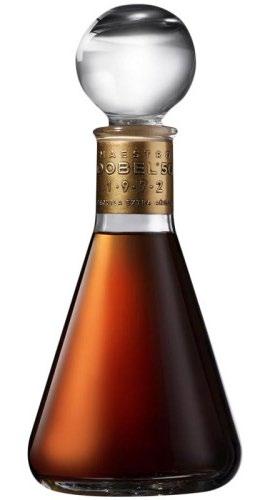

Crown Royal is the best-selling Canadian whisky and this limited-edition expression is a true stunner. Aged for a whopping 29 years, it features a robust flavor profile where the smoothness is balanced by unique Canadian rye spice notes.

KAH HUICHOL EXTRA AÑEJO TEQUILA
This stunning limited-edition tequila started with agaves from the highlands and lowlands of Jalisco, Mexico. After distillation, it spent more than a decade in oak casks, maturing in a temperature and humidity-controlled environment. Each bottle is a unique art piece that’s decorated by members of the Huichol tribe.

MARTELL L’OR DE JEAN COGNAC


L’Or de Jean Martell is an exceptional and complex cognac which expresses the myriad nuances of over 400 rare and precious eaux-de-vie, some of which have aged for more than a century. It is distinguished by the encounter of eaux-de-vie from Grande Champagne and the Borderies, the smallest and most exclusive terroir in the Cognac region, which create a blend of elegance, richness and power.


CABAL MEZCAL ARTESANAL JOVEN SALMIANA ‘JAGUAR HEAD’
After 7 days of gradually applied heat, our Salmiana begins the maceration with a Roman concrete double tahona. Our juices then flow via copper grates into a larger pit, finishing the maceration process with a large single tahona stone for the perfect extraction. The aguamiel then flows through copper grates into our open air vats where we use natural fermentation ignited with pulque from the very same Salmiana. After 3 full days, we then distill through our 200 year old copper still, twice.

DON Q RESERVA DE LA FAMILIA SERRALLES 20 YEAR OLD PUERTO RICO RUM
As the oldest rum in the Don Q rum range, this 20-year-old medium-bodied elixir brings together the flavors of fruit, vanilla, and oaky notes that were harmonized to perfection. They released only 1,865 bottles for their 150th anniversary, making this gem a very-limited edition grab!



NIKKA GOLD & GOLD SAMURAI WHISKY
This Collectible Nikka blend, originally launched in 1968, comes with its own metallic Samurai helmet and armor.
Sweet aromas on the nose with vanilla, spice. Smooth notes of toffee and warm cinnamon spice, brown sugar, dried fruits and ginger on the palate. The finish is sweet, smooth and lingering.

REY SOL EXTRA AÑEJO TEQUILA
Two pieces of art merge into one. From the creation of the decanter, designed by famous Mexican artist Sergio Bustamante, to the traditional method of production and its 6 years of aging, Rey Sol is guaranteed to provide one of the most pleasant experiences to ever grace a tequila.


2022 KENTUCKY STRAIGHT BOURBON WHISKEY
This remarkable expression is a rare limited collection of handpicked barrels, which pay homage to Blanton’s rich heritage and boast only four made bottles. Cereal grape and single barrel aromas linger on the nose, followed by wood char and citrusy flavors with a spicy cinnamon finish—a true treat for the palate.

DOM PERIGNON VINTAGE 2006 ROSÉ CHAMPAGNE


This vintage rosé Champagne is the product of a warm and dry season with a heatwave in July, an uncharacteristically cool and damp August, and a long summer. It’s a blend of 56% Pinot Noir and 44% Chardonnay, 20% being red wine.

EL DORADO 25 YEAR OLD LIMITED EDITION RUM
This limited edition 25YO is crafted from Guyanese sugarcane, harvested by hand and distilled through centuries old copper pot stills.
Rich, smooth and mellow with soft syrupy mouth-feel and subtle notes of caramel and heavy fruit cake.



HIGHLAND PARK THE DARK 17 YEAR OLD SINGLE MALT SCOTCH WHISKY
THE DARK is the first of two special editions honoring the seasons on Orkney and their profound influence on Highland Park’s legendary flavor profile. THE DARK is a fitting tribute of the dark long nights of winter that blanket the island every year. Its rich and deep flavor is the result of 17 years of maturation in first-fill sherry-seasoned European oak casks.


GERMAN EIERLIKÖR
LIQUEUR
BY SIMON PINEDO

Eierlikör: A Comprehensive Guide to the Creamy Delight
Eierlikör, also known as Advocaat, is a rich, creamy liqueur made primarily from egg yolks, sugar, and alcohol. This traditional drink has its roots in Europe and is especially popular in countries like Germany, the Netherlands, and Belgium. Known for its velvety texture and sweet, custard-like flavor, Eierlikör is enjoyed on its own, as a topping, or as an ingredient in various desserts and cocktails.
History and Origins
The origins of Eierlikör can be traced back to the 17th century in Europe. The name “Advocaat” is believed to have come from the Dutch word “advocaat,” which means “lawyer.” Some theories suggest that the drink was named so because it was popular among lawyers who enjoyed sipping it while working. Another theory is that the name was derived from the Spanish word “abogado,” meaning avocado, as the original recipes might
have included avocado pulp before transitioning to egg yolks.
Ingredients and Preparation
The key ingredients in traditional Eierlikör are:
• Egg Yolks: Provide the rich, creamy base of the liqueur.
• Sugar: Adds sweetness to balance the richness of the egg yolks.
• Alcohol: Typically a clear spirit like brandy, vodka, or grain alcohol.
• Vanilla: For additional flavor (optional).
• Cream: Used in some recipes to enhance the creaminess.
The preparation involves carefully blending the egg yolks and sugar until smooth, then gradually adding the alcohol while continuously stirring. The mixture is then heated gently to pasteurize the eggs and ensure a smooth, thick consistency. Once cooled, it can be bottled and stored.





Serving Suggestions
Eierlikör is versatile and can be enjoyed in various ways:
•Straight: Served chilled or at room temperature in small glasses.
•Cocktails: Mixed with spirits, coffee, or hot chocolate for a decadent drink.
•Desserts: Used as a topping for ice cream, cakes, or pastries.
•Baking: Incorporated into recipes for cakes, cookies, or truffles.
Popular Variations
There are several variations of Eierlikör, each with unique twists:
•Flavored Eierlikör: Includes additions like chocolate, coffee, or fruit flavors.
•Light Eierlikör: Made with less sugar and lower alcohol content.
•Homemade Eierlikör: Allows for customization in terms of sweetness, alcohol content, and flavor.
Health and Safety
When making Eierlikör at home, it’s essential to handle raw eggs carefully to avoid the risk of salmonella. Always use fresh eggs and consider pasteurizing the mixture during preparation. Store the liqueur in the refrigerator and consume it within a few weeks to ensure its freshness and safety.
Eierlikör is a beloved liqueur with a rich history and a delightful flavor profile. Whether enjoyed on its own, in a cocktail, or as part of a dessert, this creamy drink brings a touch of indulgence to any occasion. Its versatility and ease of preparation make it a favorite among home bartenders and dessert enthusiasts alike.


TOP DRINKS

VOLCAN DE MI TIERRA X.A REPOSADO TEQUILA
This ultra-aged premium tequila from Volcan De Mi Tierra is Jalisco, is a product of a unique cooking process - using both stone and brick ovens and an autoclave to cook agave - producing a tequila with a unique and extrasmooth flavor profile.

LANETA EXTRA AÑEJO TEQUILA

Made out of the finest agave by the traditional tequila-making process involving grit, hard work, and dedication, Laneta Extra Añejo Tequila, aged for a minimum of 3 years, is a rich and robust tequila that truly stands out. This grand tequila is a rich, robust, and refined añejo, with soft aromas of chocolate, fruit, agave, and toasted oak. The flavor is deep and complex, with notes of cooked agave, sweet milk chocolate, honeyed heather, sassafras, marzipan, and apricot nectar.
SIETE LEGUAS SIETE DÉCADAS BLANCO TEQUILA
For their 70th anniversary, Siete Leguas distillery has perfected every ingredient and every stage of the tequila-making process to create this spectacular Agave celebration that is Siete Decadas Blanco Tequila.


CASA AZUL ORGANIC AÑEJO TEQUILA
This tequila is crafted by 3rd generation agave farmers in Jalisco, Mexico. The farmto-bottle spirit is made using agaves from a single estate in the Lowlands, close to the distillery. The tequila is produced using traditional methods and aged for 12 to 13 months in American oak casks.
VUELO DEL AVIADOR GRAN RESERVA TEQUILA REPOSADO
Crafted from ripe 9-year-old agaves in Jalisco, Mexico, this tequila then spends 9 months in Napa Valley red wine barrels. Bottled at 80 proof, it’s a rich and complex tequila with a touch of brandy notes.


SANGRE DE VIDA CORAZÓN AÑEJO TEQUILA
Produced in Mexico by Sangre De Vida and bottled at 80 (40% ABV) proof, this well-rounded Tequila is meant to be enjoyed by Spirits enthusiasts and novices alike. On the nose, Sangre De Vida Corazón Añejo Tequila really impresses with notes of agave, oak, and caramelized honey. The palate is inviting and offers flavors of vanilla, sweet potato, honey, and pear, culminating in a rich finish with caramel notes.
TITA DONA CELIA ANEJO TEQUILA
This añejo tequila is crafted from 100% blue Weber agaves. After the cooking, fermenting, and double distillation in copper-pot stills, it’s poured into casks that used to hold American whiskey, where the tequila matures for 12 to 18 months.


TEQUILA CABAL REPOSADO (BLACK LABEL) LIMITED EDITION
Building on a delicious foundation, this tequila spends 8 months in American oak, imparting the fresh and juicy spirit with an elegant layer of oakiness. It’s a fresh and herbal nose with a delicate white oak undertone. Fruity on the palate, there are notes of citrus and sweet agave, with delicate vanilla underneath. The finish is fruity, refreshing, and slightly oaky.
HEXAMER NAHE RIESLING QUARZIT 2022
Rheingrafenberg is a steep vineyard with lots of quartz and slate in the soils, hence the name of this wine, which comes entirely from this site. Wines are fermented in a mixture of steel and large cask. Flavors of white peach, citrus, and cherry blossoms with a refreshingly mineral finish.

KARTHAUSERHOF BRUNO RIESLING SPATLESE 2018

The spiciest, wildest nose of all Karthäuserhof wines of the vintage and the densest, juiciest fruit. Very pure, no trace of honey or overripeness, just a lot of fruit and wet stone, coated with melty texture and fresh acidity. Long fruit reverberation without any dominance of sweetness. Great ripening potential.
WEINGUT JAKOB SCHNEIDER NIEDERHAUSER KLAMM RIESLING KABINETT
A very light kind smokiness intertwined with ripe nectarine and white fruit. The palate is very crisp, sight and very straight, keeping the sweetness here very much in check. The overall profile is a delicate balance of smokey volcanic elements and white fruit – a delicious apero wine.


Bright gold in color. Fresh and pleasantly fruity on the nose. On the palate, flavors of lemon and peach against a mineral backdrop. Well-matched with salads, seafood and light veal dishes.
S.A. PRUM WEHLENER SONNENUHR RIESLING KABINETT
BERTHA’S REVENGE SMALL BATCH IRISH MILK GIN
Named after the oldest cow in the world, this gin is the first small batch milk gin crafted from whey alcohol. Sweet acidity on the nose (from the whey). Cardamom and pepper with sweet notes and creamy, milky textures. Juniper notes alongside cardamom, cinnamon and cloves. This smooth, warming gin has a rich, smooth finish.

FREELAND SPIRITS GIN
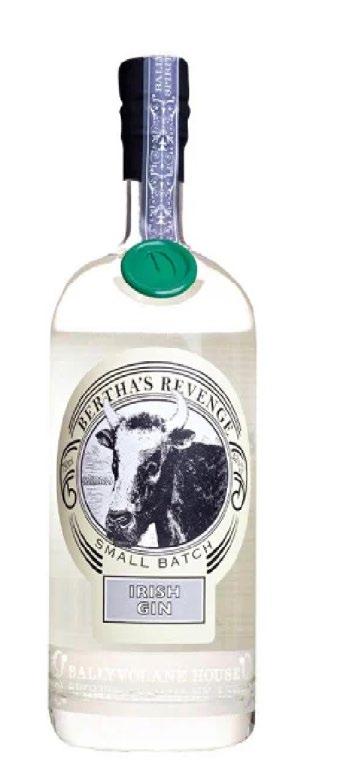
Freeland Gin crafted by hand in small batches. This gin is small batch crafted using a unique blend of traditional heat distillation along with vacuum distillation, using fresh, Pacific Northwest ingredients. Garden herbs on the nose with vibrant spice, citrus bursts, floral hints, spruce undertones. The palate offers a layered complexity with bold spice balanced by freshness, strikingly smooth texture, and a rounded body. The finish lingers with complexity.




SIETE MISTERIOS PECHUGA MEZCAL
Siete Misterios is geared toward keeping the art of traditional mezcal production alive. Their wide range of mezcals highlight several agave varietals, grown in distinct micro-climates. Almost every batch is made by a different mezcalero.


CÓDIGO 1530 ANCESTRAL MEZCAL
This ultra-premium mezcal is distilled from mature papalome agaves in San Juan del Rio, Oaxaca. The single-village expression is crafted using traditional methods that include earthen ovens, hand-mashing, open-air fermentation, and a clay pot still.
OAX ORIGINAL TEPEZTATE MEZCAL
Made from 100% wild Agave Marmorata, OAX Original Tepeztate Mezcal comes in a seducing pink bottle that acts as an art piece. Adored for its warm and refreshing finish, this bright and pristine mezcal is best enjoyed neat, on the rocks or in a cocktail. Bright, pristine, and dense, this mezcal greets with intense citrus notes that develop into smoky and earthy flavors on the palate- The warm and refreshing finish is long-lasting.

EL JOLGORIO PECHUGA MEZCAL

Made by renowned Maestro Mezcaleros, El Jolgorio Mezcal Pechuga represents a unique expression of Mexican tradition and heritage. Bursts of citrus fruit (particularly agave and pineapple). Sweet touches of green fruits and herbs, along with a hint of cajun chicken and smoke.
STAR TREK ROMULAN ALE VODKA
Distilled four tomes from premium Midwest grain, Star Trek Romulan Ale Vodka is crafted from premium Midwest grain. Its exceptional smoothness and attractive blue hue are a treat for Trekkies and vodka enthusiasts alike. The vodka has an attractive blueish hue and a gently sweet nose with hints of corn and wheat grain. It’s full-bodied with an exceptional mouthfeel, leading to a smooth and clean finish.

JEAN MARC XO VODKA

This artisanal vodka is produced just outside the Cognac region. Distilled 5 times from 4 French epicurean wheat grains, it’s an exceptionally smooth and creamy spirit, due to the innovative micro-oxygenation technique used.
DINGLE POT STILL VODKA
One of only a few vodkas produced in Ireland, Dingle Vodka is quintuple distilled and charcoal filtered, emphasizing purity above all else. Dingle vodka is a high quality, neutral grain spirit with a creamy texture and just a touch of sweetness that makes it as good sipped neat as it would be shaken or stirred in a cocktail.


DOUBLE CROSS VODKA
Produced in Slovakia by Double Cross Vodka and bottled at 80 (40% ABV) proof, this well-rounded Vodka is meant to be enjoyed by Spirits enthusiasts and novices alike. On the nose, Double Cross Vodka really impresses with subtle hints of citrus and white chocolate. The palate is inviting and offers bright flavors of white pepper and lemon zest, culminating in a warm, medium-long finish with a smooth texture.


S O C I A L MEDIA NETWORKS






This VSOP is a collaboration between Bacardi and Jay-Z, produced at the ancient cognac house Château de Cognac. On the nose are a potent bouquet, rich notes of wood, and layers of cinnamon. The palate is smooth with notes of wood, spice, nuttiness, and cinnamon. The finish is smooth with notes of honey and dried fruit.

HENNESSY V.S.O.P. X ZHANG ENLI COGNAC

Produced in France by Hennessy and bottled at 80 (40% ABV) proof, this wellrounded Cognac is meant to be enjoyed by Spirits enthusiasts and novices alike.
Hennessy V.S.O.P. x Zhang Enli Cognac doesn’t have any reviews yet. Let’s change that. Head out to the Review tab to leave your feedback.
GARRISON BROTHERS BALMORHEA TEXAS STRAIGHT BOURBON WHISKEY
The latest release from Garrison Brothers, this bold Balmorhea straight bourbon is named after an iconic West Texas park.
Bourbon candy: frozen fudgesicle bars, amaretto coffee, sticky buns, and pecan brittle. Thick, white chocolate syrup.


BUFFALO TRACE KENTUCKY STRAIGHT BOURBON WHISKEY
The distillery’s flagship bourbon has been made using the same process for over 200 years. Buffalo Trace Kentucky Straight Bourbon Whiskey is made from a mash of yellow #2 dent corn, plump rye grains and malted barley, which is cooked and cooled before being fermented for approximately 3-5 days. Deep amber color, along with an aroma of vanilla, caramel, mint and molasses. Palate offers sweet notes of brown sugar and toffee, which give way to oak, dark fruits, baking spices and anise. The finish is both mellow and complex, with lingering notes of vanilla, oak and rock candy.







